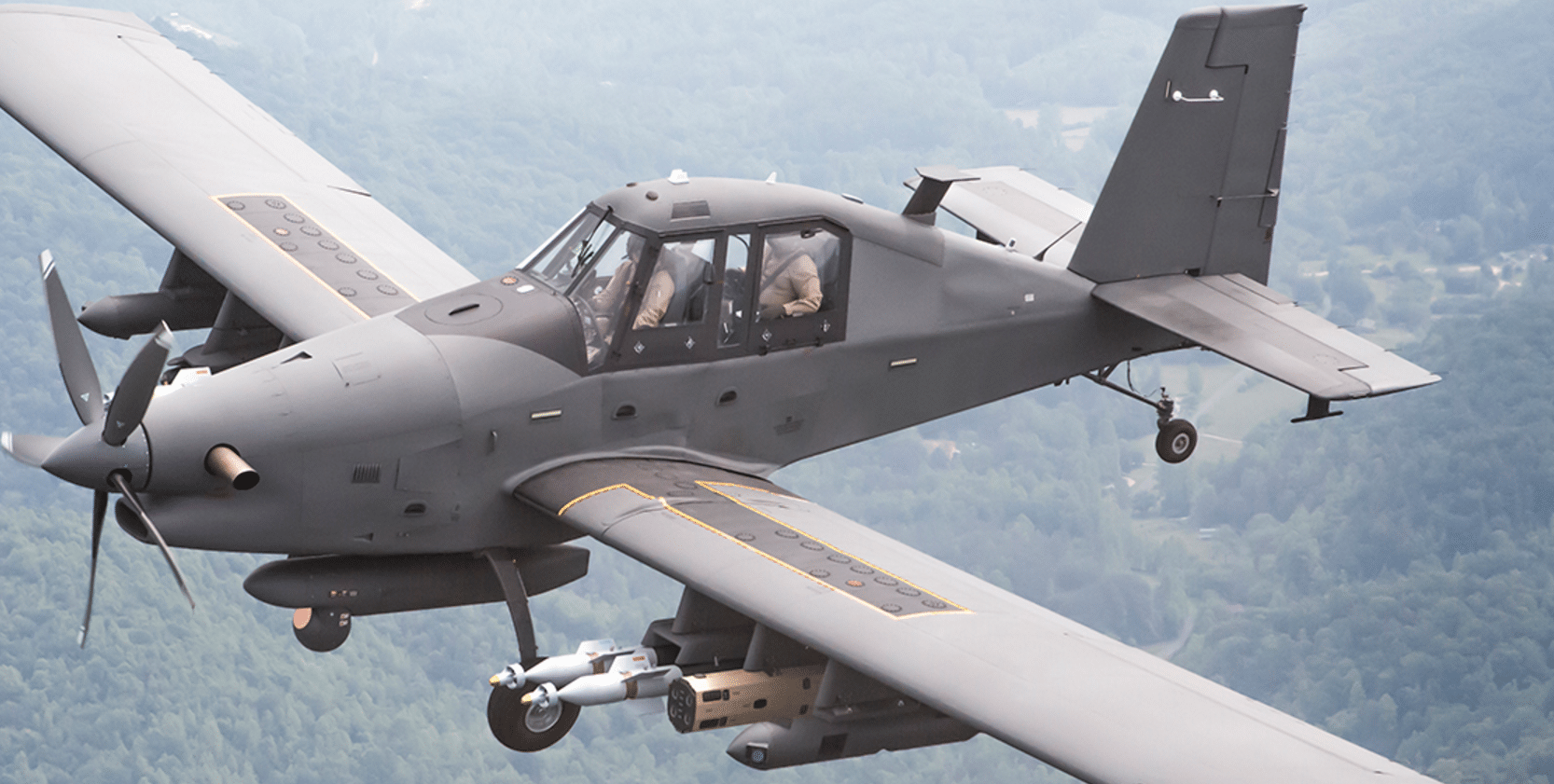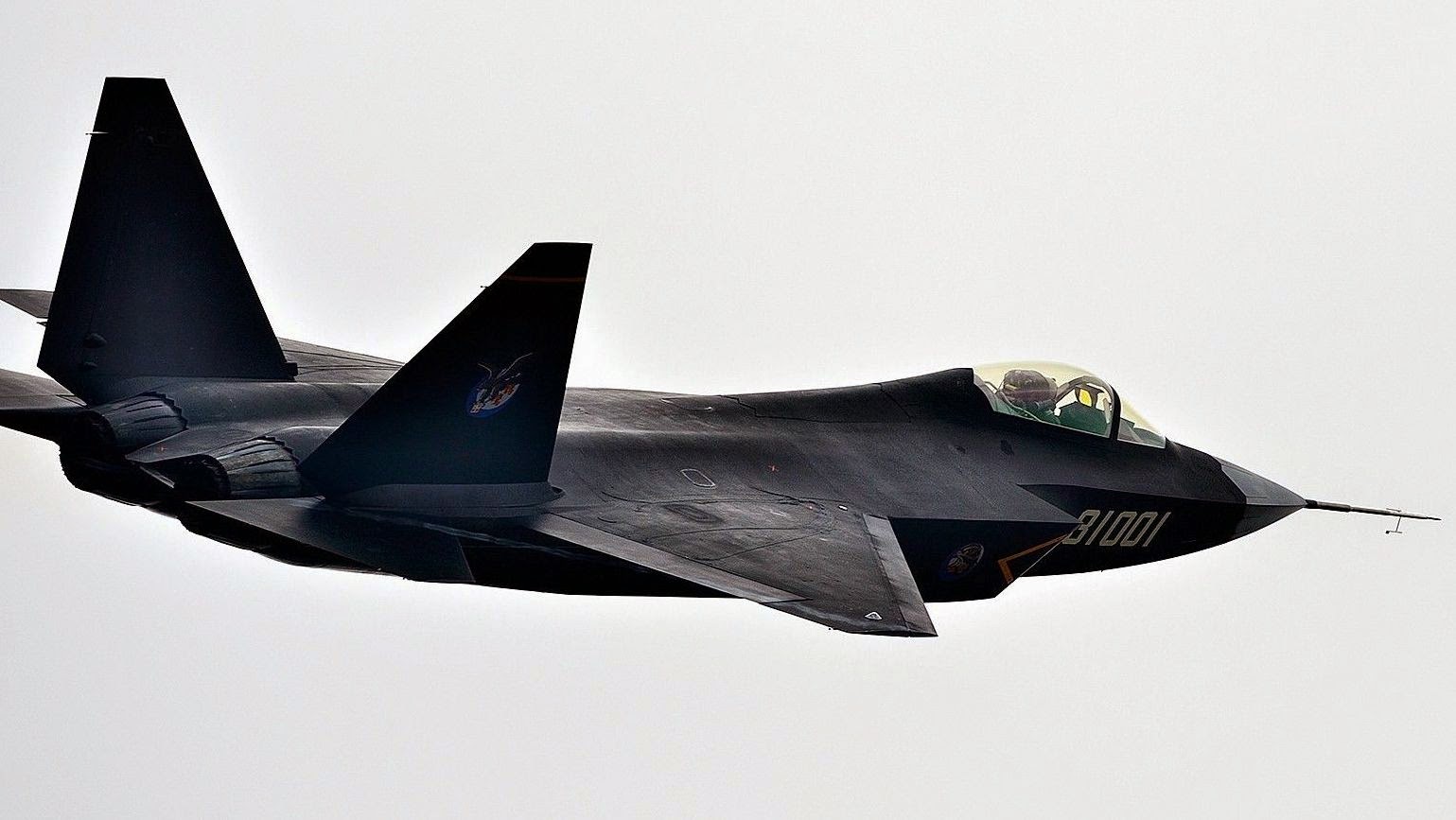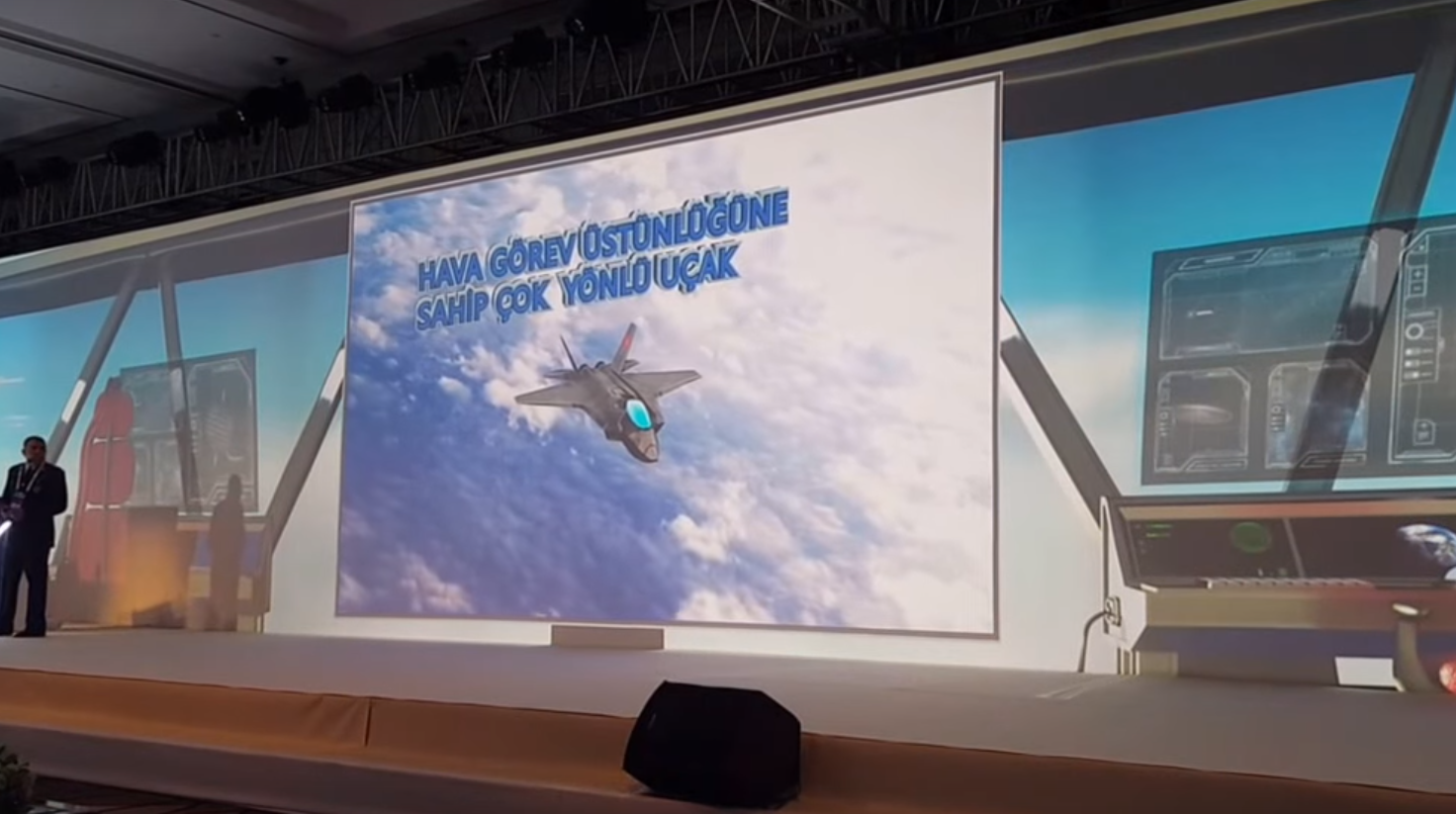2605Views 15Comments

Discussion: Is Pakistan skipping counterinsurgency aircraft?
Foreword: This is not a news story, but a piece for discussion. The details offered in this article are not authoritative pieces of information, but rather, perspectives of the author.
Since 2008 the Pakistan Air Force (PAF) has built considerable depth in its intelligence, surveillance and reconnaissance (ISR) assets. From configuring its C-130Bs with FLIR Systems Star SAFIRE III electro-optical and infrared (EO/IR) pods, equipping its F-16 Block-52+ and Mid-Life Update (MLU) fighters with the UTC Aerospace Systems DB-110 photo-reconnaissance pods, to utilizing unmanned aerial vehicles (UAV) such as the Leonardo Falco, the PAF has credible real-time surveillance and tracking capabilities.
In counterinsurgency (COIN) operations, the PAF has paired its ISR coverage with precision air-to-ground strike capabilities, which often involved GBU-10/12 Paveway laser-guided bombs (LGB). It appears that the Lockheed Martin F-16 Mid-Life Update (MLU) and Block-52+ were the mainstay attack platforms. The Burraq armed UAV was also deployed, albeit relatively recently (from 2013).
In its earlier article on the PAF’s COIN capabilities, Quwa had posed the question of whether the PAF could procure a new lightweight close air support (CAS) platform – akin the Sierra Nevada Corporation/Embraer A-29 Super Tucano, IOMAX Archangel or Turkish Aerospace Industries (TAI) Hürkuş-C – to support its COIN operations. The rationale for such a platform was lessening the strain placed on the PAF’s F-16s, which are essential for shoring up Pakistan’s conventional air defence capabilities.
Alan Warnes’ special on the PAF’s COIN efforts, published in Air Forces Monthly for August 2017, has the PAF’s Chief of Air Staff (CAS) Air Chief Marshal (ACM) Sohail Aman stating:
“The difference between our campaign – where we have been successful – and the Saudi led coalition [in Yemen] is that we have been using real-time targeting. There is no need to acquire future-generation counter-insurgency aircraft – you need the proper strategy.”[1]
The statement was made in reference to how the PAF differs in its COIN approach from Saudi Arabia and the United Arab Emirates (UAE). However, seeing that the UAE operates its COIN platforms (e.g. IOMAX Archangel) and that Saudi Arabia is examining its COIN aircraft platforms, ACM Aman’s statement implies that the PAF will not pursue dedicated COIN platforms.
Granted, the PAF has emphasized perfecting ISR more so than accumulating attack assets (for COIN). In fact, ACM Aman had told IHS Jane’s (in 2015) that “ISR is the key to our joint operations with the army.”[2] For the PAF, it has been more important to ensure that correct and timely information is available to both its own attack wings as well as those of the Army. However, the apparent decision to eschew a dedicated COIN platform bucks global COIN airpower trends.
Currently, COIN platforms are generally lightweight combat aircraft, often repurposed turboprop trainers and crop dusters, such as the EMB-314 Super Tucano and Ayres Thrush, respectively. The main rationale behind employing these aircraft instead of sophisticated fast jets, such as the F-16, is that the COIN aircraft are cheaper to acquire and to operate. In general, this is a valid assertion.
For example, the A-29 Super Tucano, AT-6 Wolverine, the TAI Hürkuş-C and others are powered by (via several variants) of the Pratt & Whitney Canada PT6 turboprop engine. The Pratt & Whitney PT6 is a highly mature design with ubiquitous adoption in many fixed and rotary wing aircraft. In turn, the PT6 is affordable to acquire and maintain. COIN aircraft manufacturers, such as the Sierra Nevada Corporation and Embraer, also point to lower fuel consumption than multi-role fighters.
The trade-off of using a slower and lighter aircraft is viewed as a non-issue. In most current COIN theatres, insurgents possess limited-to-non-existing anti-air warfare (AAW) capabilities. However, COIN platforms can – like fast jets – deploy LGBs (for fortified targets) as well as laser-guided rockets and missiles, such as the Advanced Precision Kill Weapon System (AKPWS) and Hellfire II, respectively. In effect, COIN platforms can provide credible strike capabilities without the operating cost (or deprecation) of multi-role fighters.
Thus far, most of COIN platform adopters have been developing world countries. The Super Tucano was sold to Afghanistan, Angola, Senegal, Mali, Burkina Faso, Ghana, Mauritania and Mozambique. Nigeria is also poised to order 12 aircraft under a $593 million U.S. deal with the U.S. IOMAX’s Archangel platform was adopted by the UAE and Jordan. Egypt is also negotiating for the Archangel. However, with the UAE, Saudi Arabia and Egypt aside, few major air forces have adopted COIN aircraft to complement their fast jets. Turkey is perhaps the most recent with it having ordered the TAI Hürkuş-C.
Under the OA-X initiative, the U.S. Air Force (USAF) is examining various COIN platforms. The results of this “experiment” will inform the USAF’s decision to proceed with properly assessing each option and to adopt a platform for its own use. However, it is far from certain if the USAF will embrace COIN platforms.
Pakistan’s enduring COIN efforts would suggest that a low-cost COIN platform would be sought for ground attack missions and CAS coverage for troops. However, although COIN aircraft are generally affordable, they may not be as cost-effective as another option available to Pakistan – the JF-17 Thunder.
The acquisition and support costs of the Air Tractor AT-802L and A-29 Super Tucano sit at $29.8 million and $49.42 million per aircraft, respectively. While fuel consumption costs are lower with COIN aircraft, fuel is not the only cost associated with supporting combat aircraft. Logistics, maintenance, training, space parts and weapons also feed into cost. In comparison to the F-16C/D Block-52 ($87 million per aircraft) or the Boeing F-15QA for Qatar ($293 million per aircraft), the A-29 and AT-802L are clearly more affordable.
However, the JF-17 may be cheaper. Yes, a cursory look at pricing (e.g. Myanmar’s $560 million order to AVIC for 16 aircraft) may indicate as much, but in the PAF’s case, the procurement and support inputs are sourced domestically and from China. Both sources are lower in cost than importing from the U.S. In fact, much of the JF-17’s support needs are locally sourced, such as the spare parts, training and maintenance. Besides saving in direct costs, spending on the JF-17 would be expenditure into the Pakistani economy (i.e. an economic stimulus), as opposed to a fuel for foreign exchange outflows.
It is possible that the JF-17 will complement the F-16 in COIN engagement. The PAF is in the process of integrating the Aselsan ASELPOD targeting pod to the JF-17. Thus far, two ASELPOD batches have been ordered (in 2016 and 2017), each amounting to $25 million. These could be paired to the GBU-10 and GBU-12 Paveway or another LGB kit. Interestingly, the first two JF-17 squadrons – i.e. No. 16 and No. 23 – had operated Nanchang A-5C in the ground attack role. While a multi-role asset, the JF-17 could become the spiritual ground-attack successor of the A-5C.
The other aspect to the PAF’s apparent decision may be a desire to approach CAS differently, i.e. without lightweight attackers but with attack helicopters and medium-altitude long-endurance (MALE) UAVs.
Under Project Azm (Resolve), PAC is developing a MALE UAV. While the specific capabilities of the Project Azm MALE UAV are not known. If it is as small as the TAI Anka, it would have an endurance of 24 hours and payload of 200 kg. The larger Chinese CH-5 has a payload of 1,200 kg (i.e. relatively close to the A-29) and endurance of 60 hours. Either would enable the PAF to maintain consistent ISR coverage without incurring the higher operating costs of a large platform (e.g. the C-130Bs). That ISR element can be paired with precision-guided air-to-surface munitions, ensuring that an area is persistently covered with a combined real-time surveillance and time-sensitive attack capability, and at relatively low-cost.
Attack helicopters apply to the Pakistan Army, which appears to have settled on using those to fulfill its CAS requirements. Pakistan will reportedly begin talks with TAI for the T129 ATAK, and with PAC potentially being involved in parts manufacturing and possibly even final assembly, it seems that attack helicopters are a priority platform. From that standpoint alone, it is clear why a fiscally constrained Pakistan would eschew fixed-wing COIN aircraft, which have singular value but are costly relative to other priority platforms, such as the JF-17, MALE UAV and (potentially) T129.
The Army has closely integrated attack helicopters to its ground operations doctrine for both COIN and conventional operations. In fact, the legacy AH-1F/S Cobra has been an essential aspect to the Army’s COIN doctrine, enabling its regular infantry and special operations forces (SOF) units to effectively fight in hostile environments. In conventional conflict, attack helicopters will support the Army’s heavy armour. However, a sole-COIN platform would be limited to COIN environments with limited AAW threats.
Finally, it seems that the PAF and Pakistan Army Aviation (PAA) Corps maintain clearly defined attack roles. The PAF is responsible for engaging fixed targets, such as ammunition dumps, hiding areas, training fields and communication posts, while the PAA directly supports ground operations. Granted, PAF airstrikes can indirectly assist ground operations (e.g. cutting off specific areas), but the objective of its presence in any theatre is strategic in nature, e.g. eroding an insurgent stronghold. Coordinating with the Army to define objectives in an area is one matter, but in all likelihood, it will be the PAA that will regularly cover infantry. Thus, priority would be given to building up the attack helicopter fleet.
For fulfilling strategic objectives, even in COIN, the F-16 – and potentially the JF-17 – should suffice. If the PAF is concerned about preserving the F-16’s airframe, then it can have the JF-17 assume COIN duties entirely. The PAF can deal with airframe stress on the JF-17 by locally overhauling airframes or acquire new-built JF-17s at lower cost than importing an entirely new platform and its support package.
Addendum (16 August 2017)
However, there is a caveat. If the cost of acquiring a turboprop-powered attack aircraft is low enough, the PAF may consider it an option. In fact, a recent report from the Turkish news website Kokpit Aero claims that the PAF is considering the TAI Hürkuş-C. TAI is also pitching the Hürkuş-B as a successor to the PAF’s legacy T-37 Tweet basic jet trainers. If the TAI Hürkuş platform is adopted in significant numbers by the PAF (i.e. to supplant the T-37s) with local lifecycle support and parts manufacturing, then it would make sense to scale that overhead by adding Hürkuş-C aircraft (i.e. additional units).
[1] Alan Warnes. “Swapping ‘Old Paper Maps’ for ISR.” Air Forces Monthly. August 2017. Issue: 353. p35
[2] Alan Warnes. “New Pakistan air chief hails F-16s’ role in North Waziristan campaign.” IHS Jane’s 360. 26 April 2015.



15 Comments
by Hashim Rasheed
PAC is also in the process of arming the Super Mushshak with a targeting pod and air-to-ground missiles. That seems to be an indication that the aircraft might be used for CAS role where there is little-to-none anti aircraft threat. A subsequent development, in my opinion, would be arming the K-8 with a similar pod for such missions. It would be pretty similar to other CAS platforms currently being used in the world, and may offer PAC another export product.
by umar rana
if turkey have Hürkuş-C?
Can they transform it into trainer as super mushak??
by Bilal Khan
Honestly, I suspect the armed Super Mushshak is for training personnel in ground-coordinated bomb strikes. Its payload is confined to two 25 kg munitions, it’s very unlikely that it will factor in any operation. In fact, with such a load one might as well just send in the Burraq.
The Super Tucano, Wolverine, Hurkus-C and even the idea of an armed K-8 are much larger and faster than the Super Mushshak. If the PAF is genuinely serious about having a low-cost platform to launch LGB, PGB and guided AGMs, then it will probably look at the K-8.
by Bilal Khan
The Hurkus-C is a different class of trainer. The Super Mushshak is a screener for basic flying lessons, the Hurkus is for basic fighter flying. It’s meant for replacing T-37s.
by Steve
Good comprehensive article. Our COIN needs are against fortified fixed targets and a only a few against mobile irregular infantry armed and trained by our enemies. We need more F-16 50/52 as they serve both purposes of COIN and traditional enemies. We need to shout from the rooftops that we need more F-16 as we are engaged in a life and death struggle with terrorists and IS. COIN hopefully may not be a longstanding need for PAF and having a dedicated COIN aircraft may ultimately be a waste of resources. Btw India and USA would be happy to let us have a useless turboprop aircraft. I agree with PAF/PAA approach to use possibly armed Mushshak, helicopters or Burraq drones, in addition to F-16 and JF-17.
by Bilal Khan
IMO the armed Super Mushshak is probably for training air and ground crew for laser-guided strikes. The payload (~50 kg) is way too light to be a factor in any operation, might as well use Burraq (similar payload and no risk of losing crew).
by SP
I think upgrading the super mushshak or pakistan produced armed drone would be a better use of limited resources as opposed to buying new aircrafts from abroad.
by Omar Dar
The hurkus-c is actually a modification of the original hurkus which is a trainer.
by Rehan
Yes K-8 can do the job, but now after using for a long time, its time to upgrade to K-8 to have A-10 alike strong wings and armor as well to serve three purposes
1. Training
2. COIN
3. Light attack aircraft
by Amir Timur
If we do end up inducting MALE UAVs in the near future, wouldn’t the costs of operations and maintainence be lower than using the JF-17? They would certainly deliver the ISR requirements and suffice in terms of LGBs and PGBs. Plus, the loitering time will definitely be a lot better. The JF-17 has been developed with a different mindset, to form the backbone of the PAF. And the PAF does not consider COIN it’s most credible task, that front is sub conventional in nature and needs, eventually, massive political outreach (FATA reforms, pursuing NAP, addressing grievances of the ethnic Baloch etc.). In the Pakistan military’s thinking, the bigger threat still is India. The entire eastern front needs the PAF to guard not only the skies, but enhance maritime strike capability and support the army. Overhauls and newer acquisitions cannot be a long term solution. Either we go with hi tech drones or induct credible COIN aircraft.
by Faisal Ur Rahman
Spending money on a dedicated COIN aircraft should be low on the priority as we need serious investment in developing indigenous solution for long range SAM coverage, fifth gen fighters, AESA research etc. However,if they go for a COIN aircraft with range, endurance and payload like A-29 or Hurkus then at least they need to go a step further to make them capable of firing PL-12, along with PGB or air to ground missiles ,so that it can be used for low cost air patrol and air defense purposes. Spending a lot of money on COIN will leave very room for making our defense stronger against a threat like India. Improving K-8 seems to be the shortest route.
by Tombstone
PAF could have kept A5s for COIN
by Aamir
I agree the Super Mushak is ill-suited as a coin or cas aircraft.
by Steve
The Saudis and Iran should have sat around a table and given fair representation to all parties in Yemen in political power including Houtis and this whole disastrous expensive war should never have happened. Muslims need to learn to sit down and talk to each other and not play into the hands of outside powers.
by Shaheer Anjum
Excellent article and analysis, which clearly illustrates the professional and thoughtful application of the nation’s limited resources in the long fight against armed extremism. It relieves me immensely that the military leadership isn’t spending in a haphazard manner, unlike the civilian counterparts. I too believe that the future lies with male ucav and rotorcraft, but the k8 may be a viable platform to develop into a dedicated coin aircraft albeit in the future to spare the thunders.